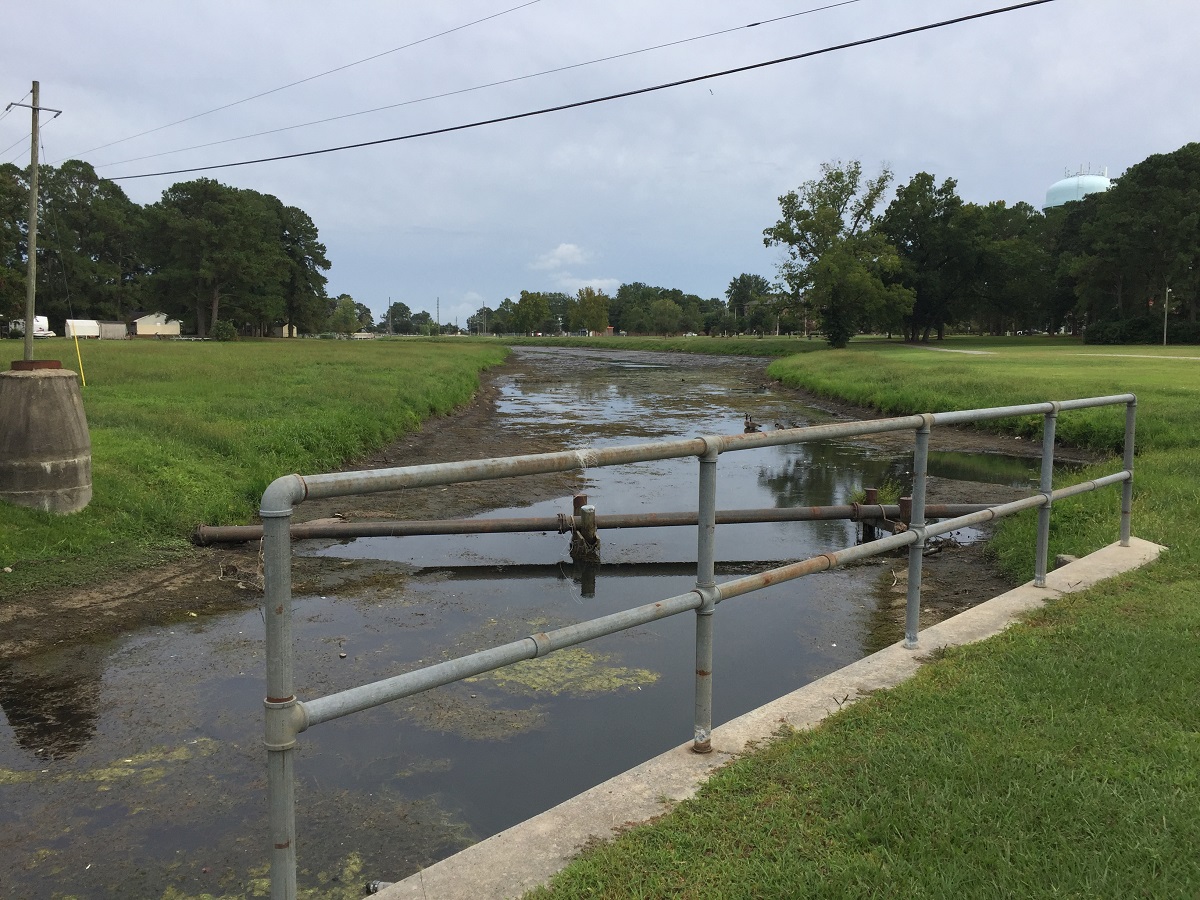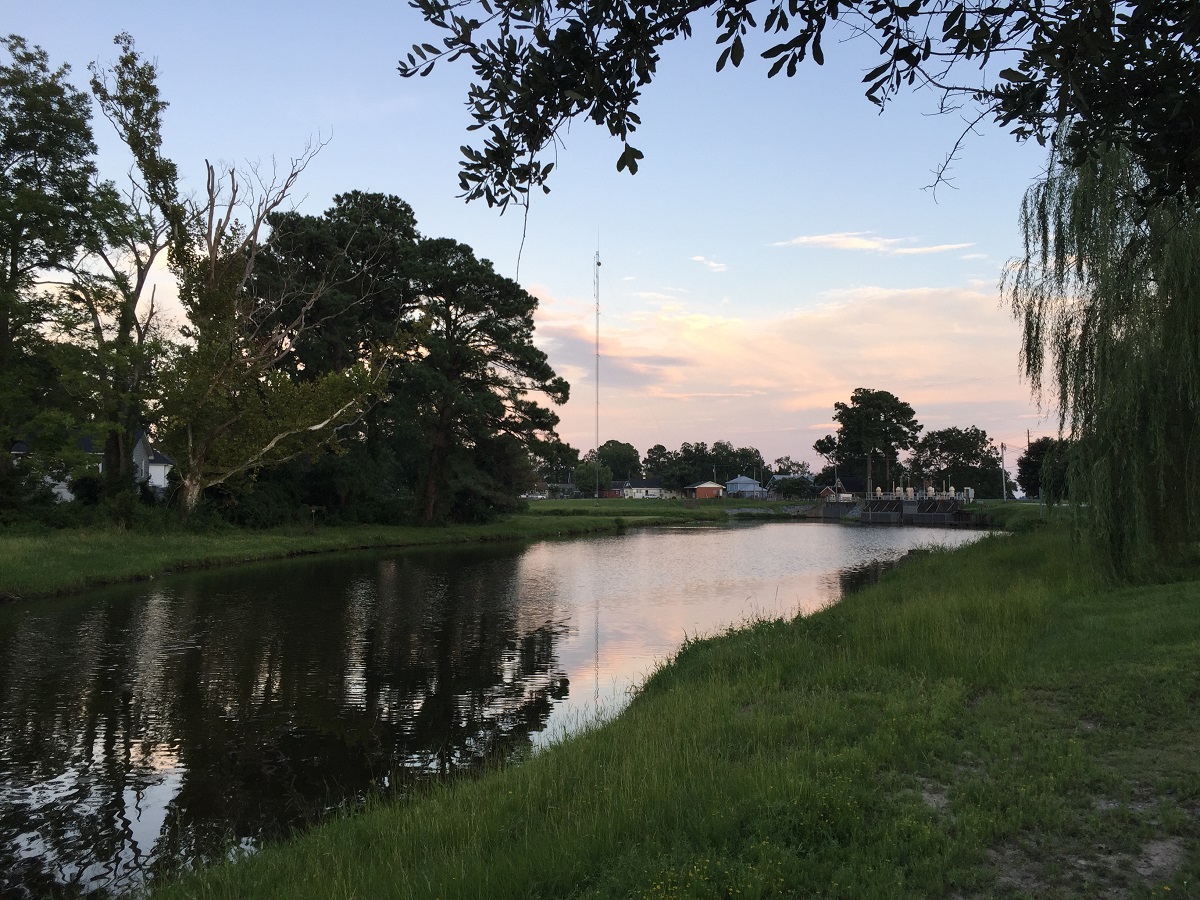
The state has awarded a total of $1.14 million to five coastal counties and 17 municipalities to engineer and design projects to mitigate and adapt to the effects of climate change.
The funds announced last week are for the third of the four-phase North Carolina Resilient Coastal Communities Program, administered by the state Department of Environmental Quality’s Division of Coastal Management, announced in November 2020.
Supporter Spotlight
The North Carolina General Assembly and the National Fish and Wildlife Foundation fund the program that helps local governments identify, plan and implement strategies that reduce the risks from rising seas, stronger storms and increased rain intensity and volume.
“The Division of Coastal Management is grateful to be able to provide funding and tools that support coastal communities with planning and actions that make them more resilient to increasingly intense natural hazards,” Mackenzie Todd, coastal resilience specialist with the division, told Coastal Review. “These funds will advance projects that the communities have identified as their priorities, and that work with our environment to defend against the impacts of severe weather.”
Projects were prioritized through community engagement and vulnerability assessments conducted in Phase 1 and project planning during Phase 2, according to a DEQ. Funding was announced in March 2021 for the two phases that ran concurrently under a single contract for each community.
Phase 3 funds engineering and design work of the prioritized project local and county governments selected in their resilience strategy or other existing plans that met criteria. There is also assistance available for some communities to develop or amend ordinances that improve their resilience to coastal hazards and manage stormwater and flooding. Phase 4, which has yet to be awarded, will support implementation of the work.
Beaufort, Bertie, Craven, Dare and Hyde counties received funding as well as the towns of Aurora, Beaufort, Belhaven, Cape Carteret, Duck, Hertford, Leland, Nags Head, New Bern, Pine Knoll Shores, Sunset Beach, Swansboro, Vandemere, Washington, and the Topsail Island towns of Surf City, Topsail Beach and North Topsail Beach.
Supporter Spotlight
Washington’s resilience strategy
Located on the northern bank of Pamlico River in Beaufort County, the city of Washington has been part of the program from the start.
Jamie Heath, planner with the Mid-East Commission Council of Governments based in Washington, told Coastal Review that the city, which had a population of 9,555 in 2020, received $30,000 for Phases 1 and 2 and had contracted the commission and RK&K Civil Engineering of Raleigh to work on the program, a requirement to apply for Phase 3.
Using this money, the city formed a Community Action Team made up of public, private and nonprofit members that worked with the Mid-East Commission and engineers on the first two phases from fall 2021 until this past spring. There was public input throughout the process including a public survey, an in-person public open house, and a virtual public open house, Heath said.
The city’s resilience strategy was developed as a result of phases 1 and 2. Included in the strategy is a priority project portfolio of resilience projects for the city, with six total priority projects, pared down from 41 possible projects.
After successfully completing the first two phases, the city was eligible to apply for Phase 3, she said. The city received $61,480 for the planning and design phase of Jack’s Creek floodplain and greenway Improvements.
The Jack’s Creek watershed drains most of downtown Washington and discharges to the Tar-Pamlico River, she said. The Jack’s Creek streambed runs directly through central Washington and is visible as it passes through and between public parks, under bridges and near neighborhood streets, all of which have views of the stream, Heath said. There is currently a milelong greenway running along the portion of Jack’s Creek adjacent to downtown Washington.

“The purpose of the project is to improve Jack’s Creek floodplain and greenway to increase stormwater capacity and decrease overbank flooding. This could include intentional inundation, bioretention ponds, and/or an automated stormwater system while also restoring the recreational area around the creek,” Heath said. “The engineering and design work will determine the most appropriate flooding solutions and create a design for those identified solutions.”
Once Phase 3 is successfully completed, the city will be eligible to apply for Phase 4, — the implementation phase, she said.
The project complements current projects in the Jack’s Creek watershed, including drainage improvements in the northern section of the creek, a stormwater mapping project funded with a federal Clean Water Act Section 205(j) water quality grant, and the nine-element watershed restoration plan Jack’s Creek funded by a state Land and Water Management Fund grant and currently being developed by Sound Rivers in partnership with the city and other project partners.
Outer Banks projects
On the Outer Banks, funds were awarded to two Dare County communities to reduce vulnerability of community assets or populations, one of the program’s goals.
On Hatteras Island, the county plans stormwater improvements at two locations off N.C. 12, mostly within the state Department of Transportation right-of-way, according to county grants administrator Barton Grover. Although the details are still being worked on, Grover said that the county anticipates building bioretention areas and/or stormwater wetlands. The $45,000 grant for Phase 3 will be used to contract with an engineer, who would likely start the project sometime this fall, he said.
Similarly, Duck had prioritized flooding issues, for which it was awarded $45,000, with the town matching another $45,000, said Sandy Cross, Duck senior planner. The town plans to use the grant money to develop a neighborhood stormwater study, she said.
Central coast
In Carteret County, Beaufort has been awarded $75,000 through the program for Phase 3, Rachel Johnson, public information officer, said. The award will go to completing the engineering and design work for town ordinance updates for enhanced community resilience.
Beaufort Mayor Sharon Harker told Coastal Review that town officials were excited about the work. “The grant funding will help Beaufort work toward being more resilient and to make a positive impact for generations to come,” she said.
The waterfront town of Swansboro in Onslow County has also been engaged in the program since its inception.
Town Manager Paula Webb said the town, which received funding for Phases 1 and 2, had also applied for Phase 3 funding. The town was awarded $45,000 for rehabilitation of Water Street, a downtown street prone to flooding. Bioretention swales are to be designed for Broad Street between Elm and Water streets, which are also prone to flooding. Phase 4, if awarded, is to go toward implementation.
Farther south, the three towns on Topsail Island – Surf City, Topsail Beach and North Topsail Beach – were awarded a total of $135,000 for the design of roadside infiltration basins to address identified areas within all three towns, Kyle Breuer, Surf City manager, explained.
Related: Surf City to use catch basins to address NC 50 flooding
“We’re thrilled to be able to continue moving both the Town and Topsail Island forward through these resilience efforts,” Breuer said in an email response. “Phase III of the Resilient Coastal Communities Program will address the engineering and design of the top priority project identified in our Resilience Portfolio, which is to establish roadside infiltration in areas that experience frequent flooding through storm events.”
Breuer said that the application process had been a joint effort between Topsail Beach, Surf City and North Topsail Beach.
“We collectively worked together under the leadership and direction of the Topsail Island Shoreline Protection Commission and citizen appointments from all three towns, collectively known as the Citizen Advisory Team,” he explained. “This laid the groundwork for understanding the Island’s vulnerability as well as the ability to think holistically about what are projects that can be replicated in any of the three jurisdictions.”
Leland’s nature-based plan
Engineering Technician II Adrianna Weber for Leland explained in an email response that during Phases 1 and 2, the Brunswick County town’s critical assets and infrastructure were analyzed through a risk and vulnerability assessment. This led to a project portfolio identifying projects that would increase Leland’s resiliency.
For these phases, Division of Coastal Management contracted with Moffat & Nichol, an engineering firm based in Raleigh. The town did not receive direct funding in these phases.
Weber said that after Phases 1 and 2 were complete, Leland applied for Phase 3 and received $20,000. The funds will be used for surveying and design services for Mallory Creek Drive drainage improvements, a priority project identified in Phase 1 and 2 of the program.
“This funding will provide a drainage plan of a portion of Mallory Creek Drive that frequently floods,” she said. This drainage plan will provide a nature-based solution.
“These improvements are crucial to our area as Leland is susceptible to heavy precipitation events, erosion, and flooding. Mallory Creek Drive is a high-traffic route for many residents and visitors of Leland, as it connects several large neighborhoods with U.S. 17 and N.C. 133,” Weber said. “Therefore, this funding will help alleviate flooding, reduce health and safety risks, and enhance the environmental appeal of the community.”
The town hopes to apply for Phase 4 funding to implement the improvements.
“We are excited to continue our work with the Resilient Coastal Communities Program,” she said.







